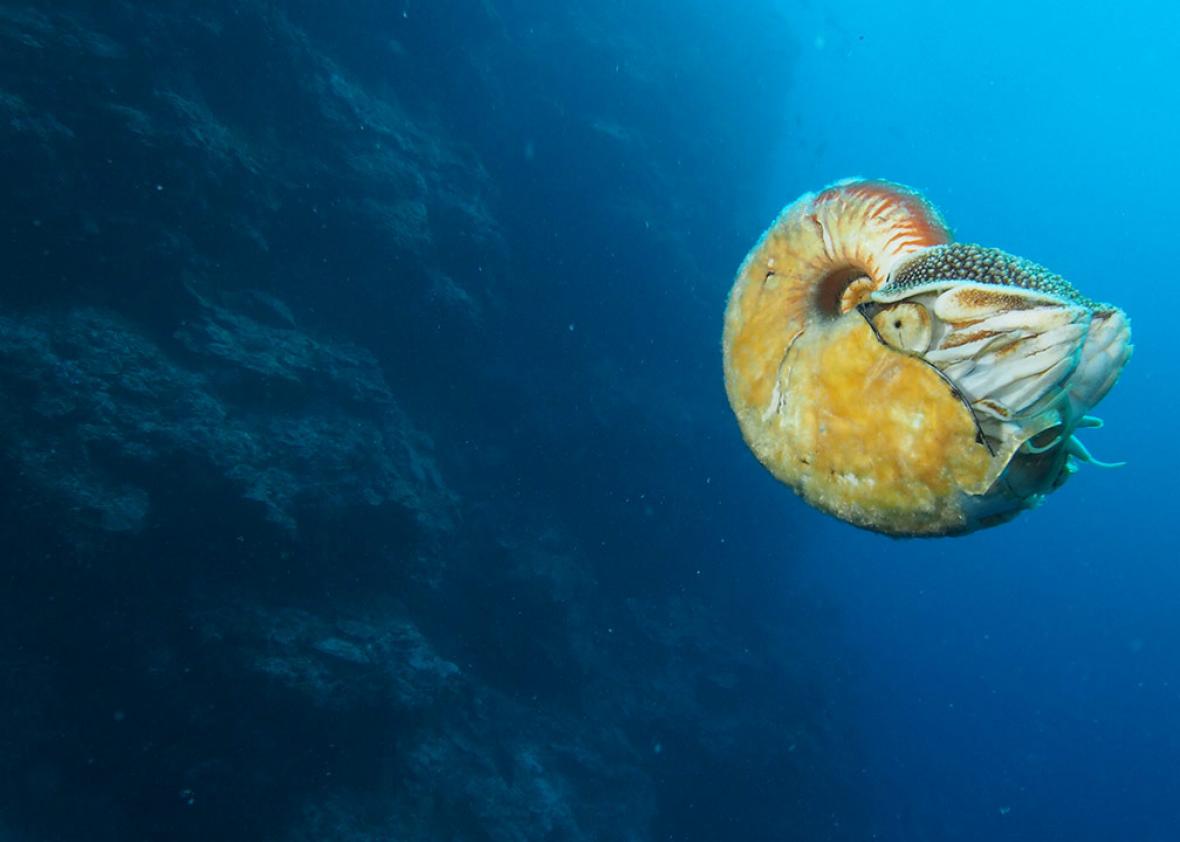
After a three-decade-long hiatus from human observation, the Fuzzy nautilus is filmed, tagged and swam with in Papua New Guinea.
American marine biologist Gregory Barord and palaeontologist Peter Ward from the University of Adelaide have been trying to answer basic nautilus conservation questions, travelling through the animal’s range in the South Pacific and Indian Ocean several times over the past five years. While most of the questions they’re looking to answer are pretty tricky, some are a bit more simplistic. This summer, the pair were out to find the rarest of the seven nautilus species, and determine if it’s still out there.
In 1984 Ward and a partner first spotted the Allonautilus scrobiculatus, or the so-called Fuzzy nautilus. But since then, no one had seen the critters. With funding from National Geographic and the US National Science Foundation, Barord and Ward headed back to the same site where Ward first saw the fuzzy genera, hoping to find the elusive swimmer. Luckily for all of us, the news is mostly good.

Photo by Peter Ward
‘This species may only be 3-5 million years old, and has unique traits, probably to live harmoniously with other nautiluses as we observed them,’ says Barord. ‘They have an algal-cell “fur” covering their shell, so stick to shallower and more light-filled waters than their cousins. Also different is their shell shape and gills, and they have an open hole at the centre of their shell-swirl with a mysterious purpose.’
The team lured in both fuzzy and regular nautiluses with a baited-cage set at nautilus-depths—between 200 to 300m—then set about their week’s worth of work. On the checklist was filming and photographing the magnificent creatures, collecting tissue samples, and fitting a few of both species with ultrasonic transmitters to track and compare their movements. They accomplished everything they set out to, but Barord says they didn’t see a great wealth of the animal. He says this is worrisome because a lot of threats are mounting against them in the past few decades, which don’t jive well with nautiluses’ long-lived and slow-paced nature.
‘Unlike their closest relatives, octopus or cuttlefish, nautiluses don’t sexually mature until 12 to 15 years of age—we don’t even know when they mate after that.’ He says females in captivity generally lay 10 eggs, and each takes a year hatch.
‘We think they live between 20 to 50 years and are usually incredibly solitary,’ says Barord. ‘All of this makes it hard for them to bounce back from widespread and continued population losses.’

Photo by Peter Ward
Overharvesting of shells for commercial purposes, deep-sea mining and oil operations, and agricultural and deforestation-induced runoff have all impacted the critter—but nautiluses didn’t come by the nickname ‘living fossil’ lightly. The chambered-shelled animals, 25 cm or so big, have been around for at least 500 million years, meaning they pulled through every mass extinction event in history, at least as we know it.
And yet Nautiluses have probably never faced opponents quite like humans, who don’t just incur big one-time losses, but keep coming back for more. Barord says locals will take over guardianship of their work, gathering long-term data. It will be awhile before conservation plans can began, he adds, but the world is clearly ready for more nautilus news.
‘Two kids have run savethenautilus.com since 2011, now there’s even Nautilus girl, a 9-year-old. This is our ultimate goal—if a person becomes passionate about one animal, they’ll probably become interested in all of them. I think the Fuzzy nautilus is a pretty convincing spokesanimal.’
